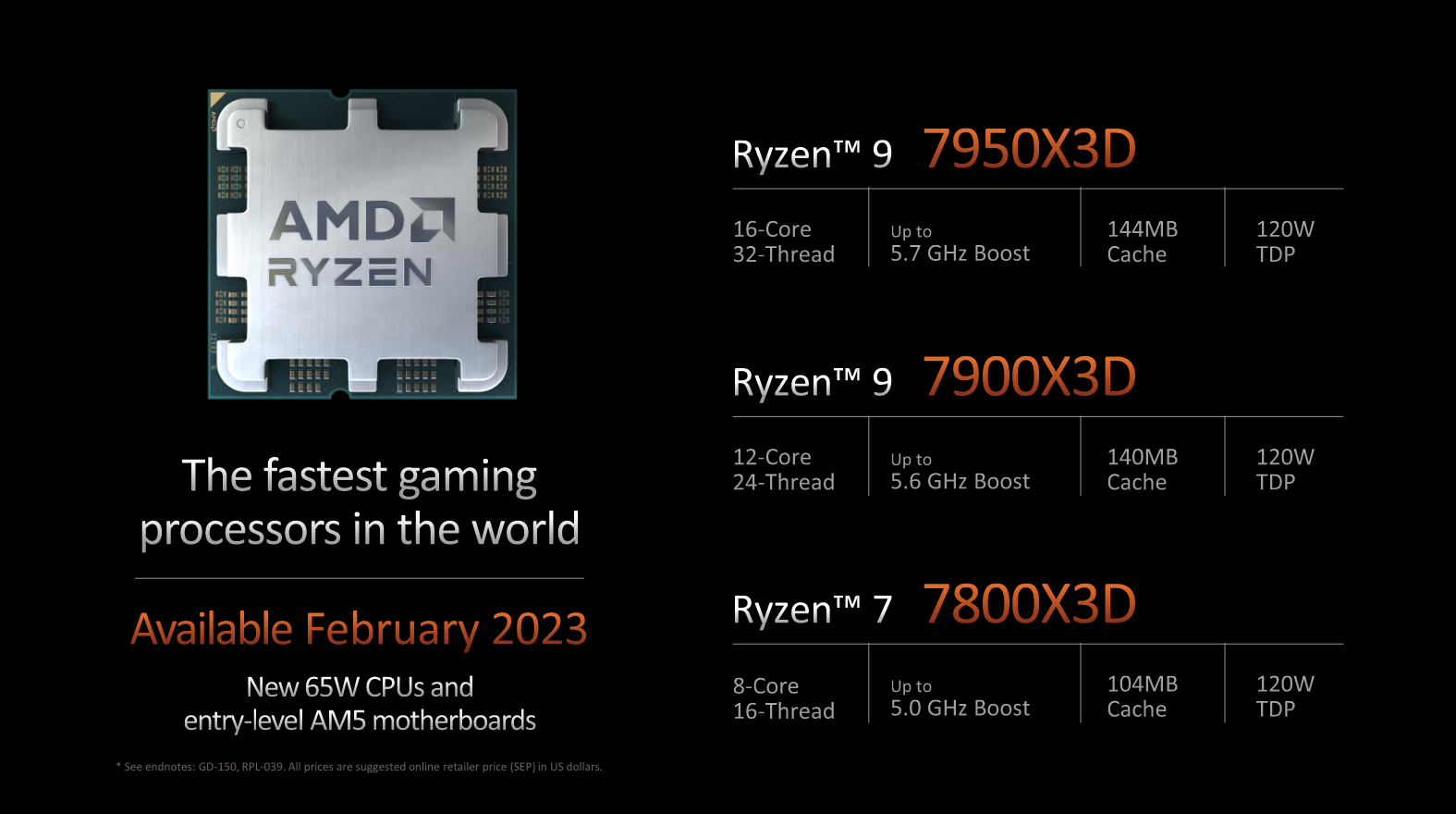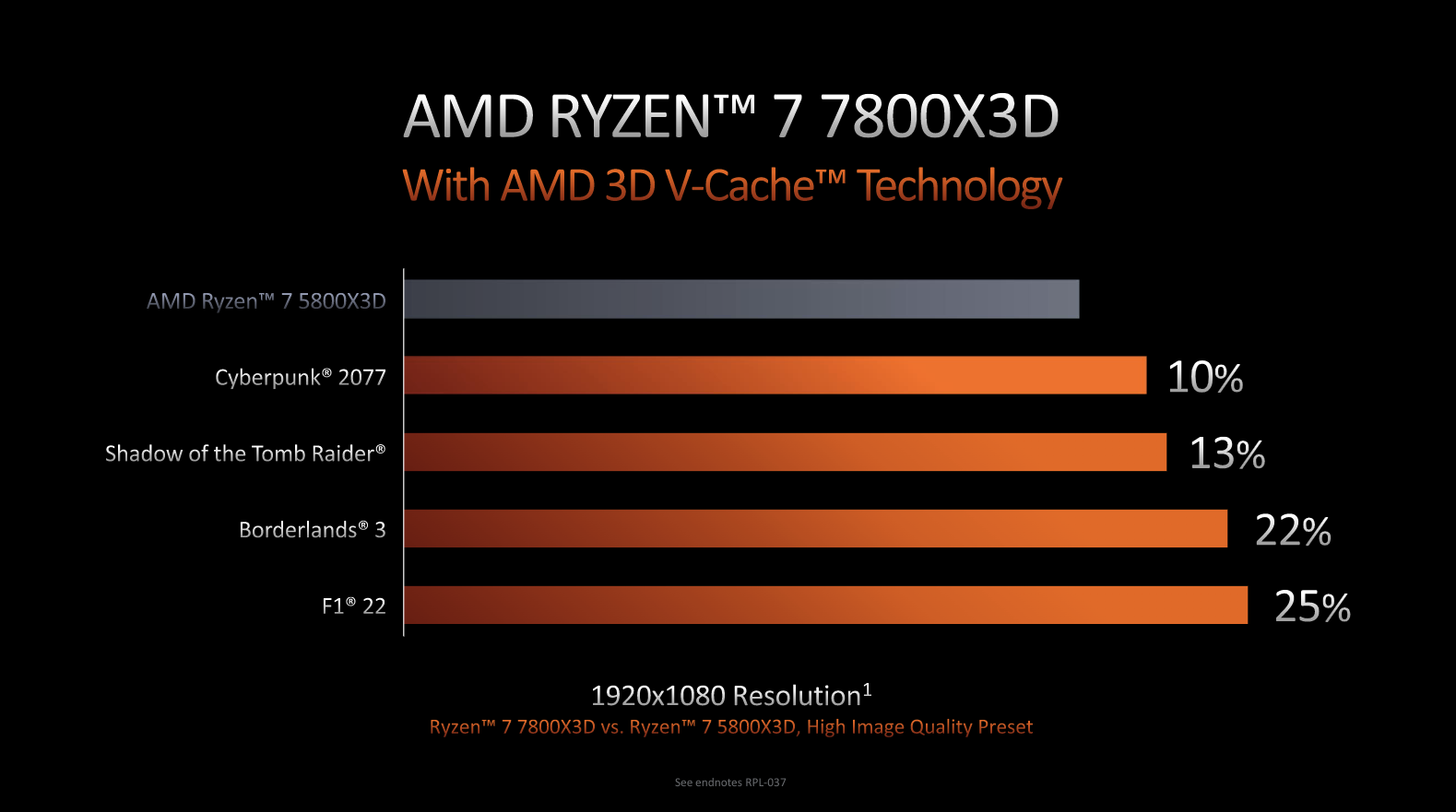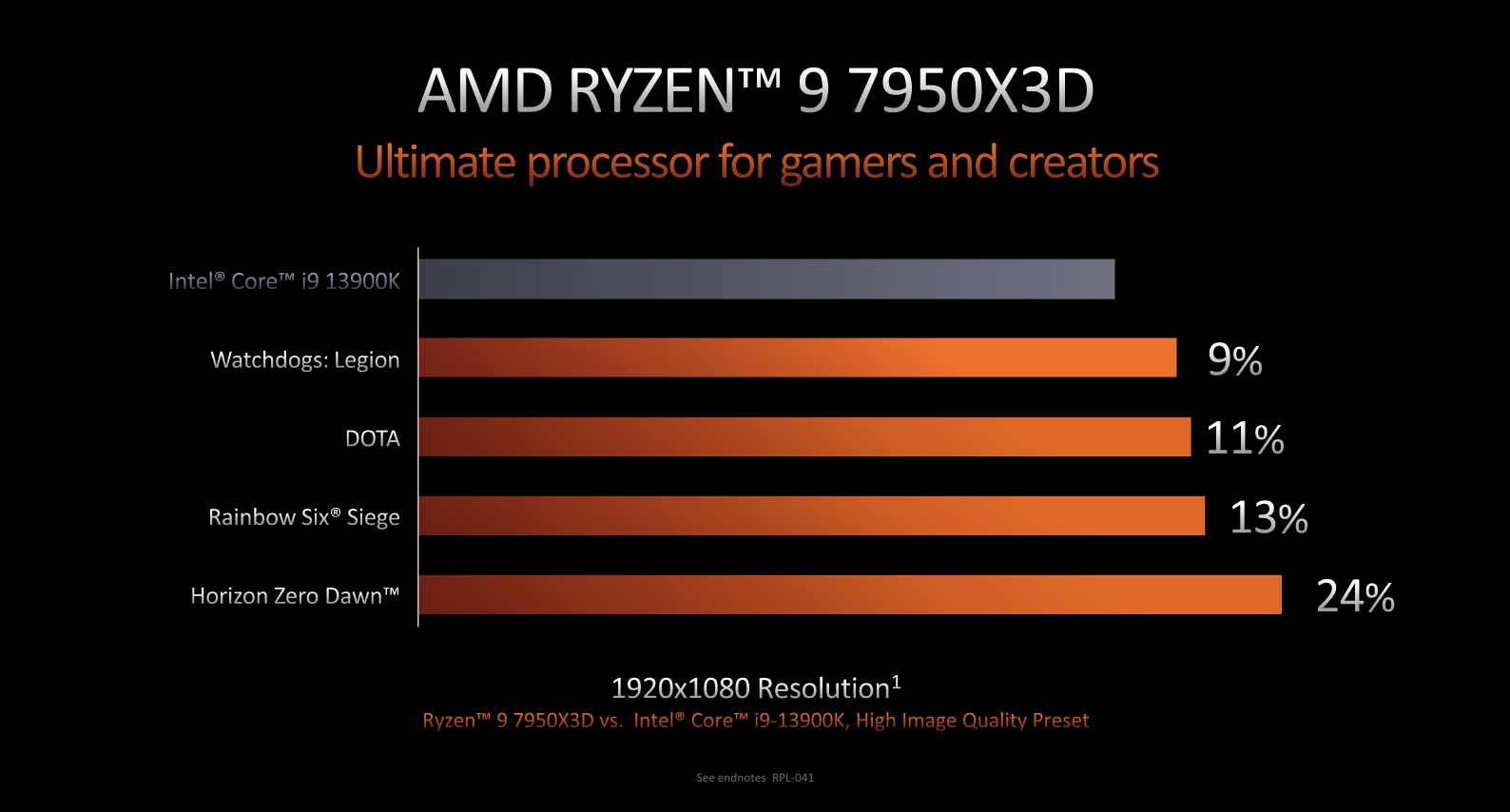AMD's lopsided Ryzen X3D CPUs need to be told which games want more cache or higher clock speeds
Cache versus clocks, what's best for in-game frame rates?

One of the big announcements at CES for us PC gaming freaks was AMD's new Ryzen 7000 series CPUs with added 3D V-Cache. It's not the first time AMD has crammed in some extra cache memory to increase gaming performance. But AMD is doing it differently this time and with the new approach comes both pros and cons.
The most obvious difference is that AMD is offering a choice of three X3D models, the Ryzen 9 7950X3D, the Ryzen 9 7900X3D and the Ryzen 7 7800X3D. Last time around, it was just the solitary Ryzen 7 5800X3D.
Along with that greater choice comes more options in terms of core counts. Instead of a single eight-core model, you can now also opt for 16 cores or 12 cores with your tasty chunk of 3D V-Cache.
Except, it's not quite that simple. While the eight-core model is essentially the same as the previous 5000-series chip, sporting a single eight-core core complex die (CCD) with added V-Cache, the 12 and 16-core models are dual CCD.
And it turns out that those CCDs are not equal. Where two CCDs are used in these new X3D chips, only one of them gets the added V-Cache. The net result is a rather complex asymmetric design that throws up all kinds of questions.
That said, the asymmetric layout does at least explain why the 7800X3D is so much slower than the other two models. The eight-core chip has a peak boost speed of 5GHz, much lower than the 5.7GHz and 5.6GHz speeds of the 16-core and 12-core models.

With two quite different CCDs, how do you ensure that any given application or game is running on the right one.
The reason why is that the V-Cache limits the boost speed of any CCD to which it is applied. The 7800X3D has the one CCD, so it's limited to that V-Cache capped clock speed. However, the other two chips can boost their non-V-Cache enhanced CCDs to the same clockspeeds as their counterparts from the conventional Ryzen 7000 range, hitting 5.7GHz and 5.6GHz respectively.
The biggest gaming news, reviews and hardware deals
Keep up to date with the most important stories and the best deals, as picked by the PC Gamer team.
Immediately, that presents a problem. With two quite different CCDs, how do you ensure that any given application or game is running on the right one. Indeed, which is the right one?
With the old Ryzen 7 5800X3D, the on-paper clock speed was only a few hundred MHz lower than the standard chip. The benefit of the 3D V-Cache easily outstripped that. But here, up to 700MHz is quite a big gap. At what point does clock speed trump V-Cache, and in what games?
Of course, CPUs rarely run at their peak boost speeds in gaming terms. And it remains to be seen how big that real-world clock speed gap will be.
Perhaps the more relevant question is whether some games will prefer the cache or the clocks. What we do know is that AMD is making that assumption—that it will vary by game.
AMD told our sister site, Tom's Hardware, that it is working with Microsoft on an update for the Windows OS that will hook up with a new chipset driver to identify and schedule workloads on a per-game basis to ensure the optimal CCD is prioritized for a given game.

Those that benefit most from the V-Cache will run on the relevant CCD, while those that run faster courtesy of higher clocks will instead be shunted onto the faster non V-Cache CCD.
It's worth remembering that Intel is doing something similar with its own asymmetric CPUs, which contain two very different core architectures in a single chip. Indeed, the performance and technical gap between Intel's P Cores and E Cores is arguably much bigger than AMD's V-Cache and non V-Cache CCDs.
Of course, Intel has greater engineering resources than AMD. So, the fact that Intel has been able to make its hybrid CPU design work so well does not guarantee that AMD will be able to ensure its new asymmetric chips run optimally.
The upside of AMD's new approach is that you have the best of both worlds in one chip. Assuming a game is scheduled to the correct CCD, you have both a high clocked option and a V-Cache option. Stick it on the right CCD and you have the best possible performance.
But the new approach does add complexity. And it does mean you are relying on AMD having done the work with any given game. In an ideal world, hardware that just works with any software and doesn't need hand tuning is preferable.

Of all the new X3D CPUs, it's that 12-core model that seems most problematic.
In practice, it's probably safe to assume that AMD will have done the work with any major existing or new game release. Likely, it will only be edge cases with lesser known games and apps where the optimization work may not have been done.
Oh, and one other question remains unanswered, albeit only for one of the new CPU models. We know the eight-core chip is pure V-Cache and that the 16-core model has one full eight-core V-Cache CCD and one full eight-core non-V-Cache chip. But what about the Ryzen 9 7900X3D?
That's a 12-core chip. So, does it have two six Core CCDs? Or perhaps one eight-core V-Cache CCD and one four-core non-V-Cache CCD? And of those two options, which might be the best bet for gaming?
Some games might run faster on eight V-Cache cores than six. Indeed, others might run best on eight high-clocked cores than six or, indeed, just four. Of all the new X3D CPUs, it's that 12-core model that seems most problematic.
We suspect for gamers, the simplest and most cost effective option will be the straight eight-core, all V-Cache 7800X3D. For now, AMD hasn't directly compared that chip with the higher core count models in its own in-house benchmarks. So, we'll be intrigued to see if there are games where the 16-core option is actually faster.
Best CPU for gaming: Top chips from Intel and AMD
Best gaming motherboard: The right boards
Best graphics card: Your perfect pixel-pusher awaits Best SSD for gaming: Get into the game first

Jeremy has been writing about technology and PCs since the 90nm Netburst era (Google it!) and enjoys nothing more than a serious dissertation on the finer points of monitor input lag and overshoot followed by a forensic examination of advanced lithography. Or maybe he just likes machines that go “ping!” He also has a thing for tennis and cars.


